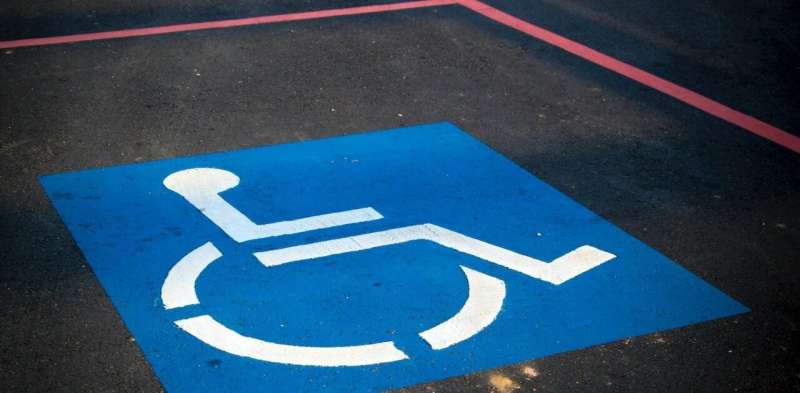
Mandatory isolation rules for people with COVID end today. Pandemic leave disaster payments will also cease for all workers except casual workers employed in aged care, disability, hospitals, Indigenous health services and hospitals.
These changes signal the end of most legislated COVID safeguards. Rules to enforce mask-wearing on public transport, vaccination for entry to public spaces, and isolation of close contacts have been dropped by state and territory governments in recent months.
Many places have also discontinued vaccine mandates for workers in sectors such as aged care, disability, and health.
Despite the clear benefits of good indoor ventilation to reduce COVID transmission risk, many schools, workplaces, and public spaces are poorly ventilated.
The withdrawal of active protections plus the failure to ensure safe indoor air puts people with disability at greater risk than the rest of the population. Action is needed to protect this group.
People with disability face deadly risks
International studies show disabled people are at higher risk of dying from COVID than their age-matched peers. People with intellectual and psychosocial disability (such as schizophrenia, bipolar disorder and social anxiety disorders) are at the highest risk—three to nine times that of the general population.
In England between January 2020 and March 2022, 60% of people who died from COVID were disabled.
To date, comparable data has still not been reported for Australians with disability. But there is no reason to believe the risk for disabled Australians is any different than overseas.
Some people with disability are clinically vulnerable because they are immunocompromised due to medications for conditions such as for rheumatoid arthritis or multiple sclerosis. This group also has a higher prevalence of conditions like diabetes, cardiovascular and respiratory disease. These are associated with serious disease and death from COVID.
Many disabled Australians also have difficulties accessing health care because of physical inaccessibility and lack of knowledge and expertise of health care providers about disability. This means they may not receive anti-viral COVID treatments, even if they are eligible.
Enforced isolation
Many people with disability continue to isolate at home to avoid infection and are effectively shut out of society as online options for participation dry up.
For people who rely on paid support, isolation is not an option. Their workers are still circulating in the community. Some disabled people live and work in congregate environments with other people with disability—settings associated with higher rates of COVID infection and death.
A significant minority of people with disability have not had the recommended COVID vaccinations and boosters.
Almost one quarter of participants in the National Disability Insurance Scheme (NDIS) aged 16 and over have not had three COVID vaccine doses; less than one-third have had four doses. A third of NDIS participants aged 12 to 15 have not had two COVID vaccine doses. The vaccination rates of the 88% people with disability who are not on the NDIS are not reported.
A forgotten workforce
Disability support workers we spoke to in 2020 told us they felt forgotten by government without access to personal protective equipment and tailored information about how to protect themselves and people they supported.
Workers we surveyed in 2021 reported higher levels of vaccine hesitancy than the general population and expressed concerns about vaccine safety and efficacy.
Concern about what’s next
Without isolation periods in place, people with disability are deeply concerned about what will happen when new immune-evasive variants of SARS-CoV-2 (the virus that causes COVID) arrive.
Throughout the pandemic, disability advocates and supporters and academics have drawn attention to the risks of COVID for disabled people.
The Royal Commission into Violence, Abuse, Neglect and Exploitation of People with Disability criticized the federal government for its slow initial efforts to protect people with disability during the pandemic and for delays in the vaccination rollout.
Governments around the world have reassured the public COVID is more dangerous for the chronically ill, elderly and disabled. This has the effect of suggesting their/our lives matter less.
Public health measures—or decisions to end them—signal what our society is prepared to do to care for people at risk. Some advocates have labeled the relaxation of COVID protections as ableist, even eugenicist. Others say it will guarantee the societal exclusion of the clinically vulnerable.
With evidence long COVID can affect one in 20 of those infected, including previously healthy people, the proportion of disabled people in our community will likely swell in coming years.
Five COVID protections needed for people with disability
Strategies to minimize the COVID risk for people with disability should include:
Governments need to work with services and workers to make sure they understand the risks to people with disability if they have symptoms of COVID or other respiratory infections.
Workers who test positive for COVID should be blocked from face-to-face support of people with disability for at least seven days and pending a negative RAT. Access to paid isolation leave for disability workers is critical, so they don’t have to choose between exposing the people with disability they support to illness and paying the rent.
Source: Read Full Article
